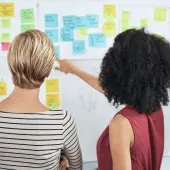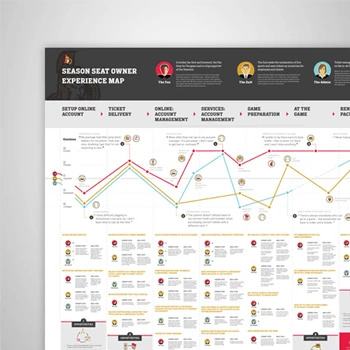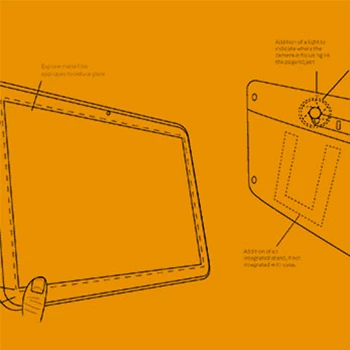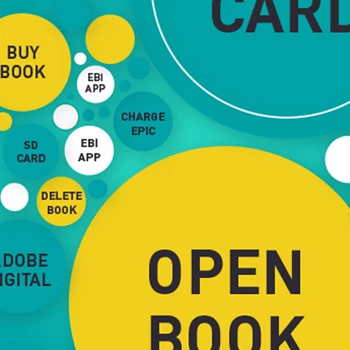What exactly is customer experience concept ideation and why do we need it?
Customer experience concept ideation generates new ways to connect with customers and identifies winning engagement concepts through systematic creative processes. Using our Experience Thinking framework, we explore opportunities across brand, content, product, and service touchpoints to create innovative customer experiences that drive business growth and competitive advantage.
Tip: Focus ideation on solving actual customer problems rather than just generating creative ideas without clear business purpose.
How does concept ideation differ from traditional brainstorming?
Concept ideation follows structured processes that move from opportunity discovery through idea exploration to concept incubation with customer validation at each stage. Unlike open brainstorming, our approach grounds creative thinking in customer research, business objectives, and Experience Thinking principles to ensure ideas can become viable experiences.
Tip: Use structured ideation methods that combine creativity with business reality rather than unguided brainstorming sessions.
What types of customer experience opportunities can ideation reveal?
Ideation reveals opportunities for new customer touchpoints, experience improvements, service innovations, digital engagement methods, and brand experience enhancements. Through Experience Thinking, we identify opportunities that create connected experiences across the complete customer ecosystem rather than isolated improvements at single touchpoints.
Tip: Look for opportunities that create connected experiences across multiple touchpoints rather than just optimizing individual interactions.
How do you balance creativity with business constraints during ideation?
Our process begins with divergent thinking to generate numerous possibilities, then applies business reality through convergent evaluation. We use concept incubation to focus on achievable experiences while maintaining innovative potential. Success metrics cover business, technology, and experience goals to ensure concepts are both creative and viable.
Tip: Start with unconstrained creative exploration, then apply business filters to focus on achievable concepts rather than limiting creativity from the beginning.
What role does customer research play in concept ideation?
Customer research provides the foundation for ideation by revealing unmet needs, pain points, and aspirational goals that inspire concept development. Research ensures ideation addresses real customer challenges rather than internal assumptions. We use ethnographic techniques, contextual interviews, and behavioral observation to ground concepts in customer reality.
Tip: Ground ideation in actual customer insights rather than internal assumptions about what customers want or need.
How do you identify innovation opportunities for customer experiences?
Opportunity discovery combines customer immersion, market intelligence scanning, competitive analysis, and trend identification. Through Experience Thinking, we examine innovation possibilities across brand positioning, content strategy, product features, and service delivery. Opportunities often emerge from observing customer workarounds and unmet needs in current experiences.
Tip: Observe customer workarounds and frustrations with current solutions to identify innovation opportunities rather than just following market trends.
What's your approach to participatory ideation with customers and stakeholders?
Participatory design brings customers and stakeholders to the ideation table as co-creators rather than just feedback providers. We facilitate workshops with scenario refinement, affinity diagramming, and collaborative sketching that extract tacit knowledge from people solving their own problems. This approach creates shared ownership of concepts and reveals insights traditional ideation cannot access.
Tip: Include customers as co-creators in ideation sessions rather than just presenting concepts for feedback after development.
What's your ideation process from start to finish?
Our process follows three phases: opportunity discovery to identify innovation possibilities, idea exploration using sketching and journey mapping to make concepts concrete, and concept incubation to develop viable concepts with success metrics. Each phase includes customer validation to ensure concepts remain grounded in real needs and market opportunities.
Tip: Follow a structured ideation process that moves from broad exploration to focused concept development rather than jumping directly to detailed solutions.
How do you facilitate productive ideation workshops?
Workshops begin with clear purpose definition and objective alignment among participants. We use structured activities like brainstorming, sketching, and experience mapping while maintaining flexibility for organic discussion. Our facilitation ensures active participation from diverse perspectives while keeping sessions focused on achieving specific outcomes.
Tip: Define specific workshop objectives and success criteria before beginning rather than hoping productive outcomes will emerge naturally.
What ideation techniques do you use to generate concepts?
Techniques include experience sketching, journey mapping, storyboarding, scenario development, affinity diagramming, and collaborative prototyping. Through Experience Thinking, we ensure ideation explores possibilities across brand, content, product, and service experiences. Methods are selected based on the specific challenge and participant composition.
Tip: Choose ideation techniques that match your specific challenge type rather than using the same methods for all concept development needs.
How do you help participants think beyond obvious solutions?
We use structured exercises that challenge assumptions, explore analogies from other industries, and examine customer problems from multiple perspectives. Techniques include environment disruption scenarios, trend intelligence scanning, and aspirational visioning that pushes participants beyond incremental improvements to transformational possibilities.
Tip: Challenge participants to explore solutions from completely different industries rather than just improving existing approaches.
How do you capture and organize ideas during ideation sessions?
We use digital whiteboards, affinity mapping, and visual organization tools to capture all ideas systematically. Documentation includes concept sketches, participant reasoning, and connection mapping between related ideas. Organization methods help identify patterns, themes, and promising concept clusters for further development.
Tip: Document the reasoning behind concepts rather than just the ideas themselves to enable better evaluation and development later.
What role does prototyping play in concept ideation?
Prototyping makes abstract concepts tangible and testable by creating low-fidelity representations that stakeholders can experience and evaluate. We use paper prototypes, experience sketches, and interactive mockups to communicate concept potential. Prototyping helps refine concepts through immediate feedback and identifies implementation challenges early.
Tip: Create tangible prototypes that people can interact with rather than just describing concepts verbally or in documents.
How do you select the most promising concepts for development?
Selection combines customer validation, business viability assessment, technical feasibility evaluation, and strategic alignment review. Through Experience Thinking, we assess how concepts enhance the complete customer experience ecosystem. Selection criteria include innovation potential, competitive advantage, and organizational capability to execute successfully.
Tip: Use multiple evaluation criteria including customer value, business viability, and execution capability rather than just creative appeal when selecting concepts.
How do you plan and structure ideation workshops effectively?
Planning begins with clear objective definition, participant selection, and logistics coordination. We create detailed agendas with timed activities, discussion periods, and breaks while maintaining flexibility for productive tangents. Structure includes warm-up activities, focused ideation phases, and synthesis periods that build momentum toward specific outcomes.
Tip: Prepare participants 24 hours in advance with workshop goals and context rather than explaining objectives during the session.
Who should participate in customer experience ideation workshops?
Effective workshops include diverse perspectives from customers, business stakeholders, designers, developers, and market experts. We carefully select participants who bring relevant expertise, fresh perspectives, and decision-making authority. Participant diversity ensures concepts address multiple viewpoints while maintaining focus on customer needs and business objectives.
Tip: Include participants who can make decisions about concept implementation rather than just contributors who provide input without authority.
How long do ideation workshops typically take?
Workshop duration depends on challenge complexity and participant availability. Basic concept ideation takes 4-6 hours, while complex experience innovation may require 1-2 full days or multiple sessions. We design workshop length to maintain participant energy and focus while achieving meaningful outcomes. Follow-up sessions often refine and develop promising concepts.
Tip: Plan workshop duration based on participant attention spans and concept complexity rather than trying to accomplish everything in a single session.
How do you manage virtual versus in-person ideation sessions?
Virtual sessions use digital collaboration tools, shared whiteboards, and structured activities that engage remote participants effectively. In-person sessions leverage physical materials, spatial organization, and natural group dynamics. Both formats require careful facilitation to ensure active participation and productive outcomes. We adapt methods to maximize each format's advantages.
Tip: Use collaborative digital tools that enable real-time interaction rather than just screen sharing when facilitating virtual ideation sessions.
How do you ensure all participants contribute meaningfully to ideation?
Facilitation techniques include structured turn-taking, anonymous idea contribution, small group exercises, and visual thinking methods that accommodate different communication styles. We create safe spaces for exploration and use methods like post-its and sketching that enable quiet participants to contribute alongside vocal ones.
Tip: Use anonymous idea generation methods to encourage participation from introverted participants who might not speak up in group discussions.
What materials and tools do you use for ideation workshops?
Tools include digital whiteboards like Miro and MURAL, physical materials for sketching and prototyping, sticky notes for idea organization, and time management applications to maintain focus. We prepare accessibility accommodations and provide multiple ways for participants to express and capture ideas. Tool selection depends on workshop format and participant needs.
Tip: Prepare multiple ways for participants to contribute ideas including visual, verbal, and written methods rather than assuming everyone works best with the same tools.
How do you handle disagreement or conflicting ideas during workshops?
Disagreement often reveals important considerations and alternative perspectives that strengthen final concepts. We facilitate productive conflict through structured discussion, perspective-taking exercises, and objective evaluation criteria. The goal is understanding different viewpoints rather than achieving consensus on every idea. Conflicts often lead to breakthrough concepts.
Tip: Treat disagreement as valuable input that reveals important considerations rather than obstacles to overcome in ideation sessions.
How do you develop rough ideas into concrete experience concepts?
Concept development uses sketching, journey mapping, and storyboarding to make ideas tangible and evaluable. We create experience narratives that show how concepts work in practice, identify touchpoints, and reveal implementation requirements. Through Experience Thinking, concepts address the complete customer experience rather than isolated features or services.
Tip: Create experience stories that show concepts in action rather than just describing features or benefits in abstract terms.
What level of detail do you develop in initial concepts?
Initial concepts include enough detail for stakeholder evaluation and customer validation while avoiding premature commitment to specific implementation approaches. We develop concept narratives, key touchpoints, value propositions, and success metrics. Detail level balances communication clarity with development flexibility as concepts evolve through validation.
Tip: Develop concepts with sufficient detail for meaningful evaluation while maintaining flexibility for refinement based on feedback.
How do you validate concepts with customers before significant investment?
Validation uses concept testing through participatory exercises, prototype interaction, and scenario evaluation with representative customers. We test concept appeal, usability potential, and value perception through structured feedback sessions. Validation ensures customer and user reaction levels align with business and technology factors before major development investment.
Tip: Test concept appeal and practical usability with real customers rather than just internal stakeholder opinions when validating ideas.
How do you refine concepts based on validation feedback?
Refinement involves systematic analysis of validation feedback to identify concept strengths, weaknesses, and improvement opportunities. We iterate concept elements while maintaining core value propositions that tested positively. The refinement process balances customer feedback with business objectives and technical constraints to create implementable concepts.
Tip: Focus refinement on concept elements that tested poorly while preserving aspects that customers responded to positively.
How do you prioritize multiple concepts for development?
Prioritization uses evaluation frameworks that assess customer value, business impact, implementation complexity, and strategic alignment. Through Experience Thinking, we consider how concepts contribute to the complete customer experience ecosystem. Priority concepts typically offer high customer value with reasonable implementation requirements and clear business benefits.
Tip: Evaluate concepts based on customer value and business impact rather than just creative appeal or implementation ease.
What documentation do you provide for selected concepts?
Documentation includes concept narratives, experience maps, value propositions, implementation considerations, success metrics, and validation evidence. We provide both detailed development guides for implementation professionals and executive summaries for strategic decision-making. Documentation supports concept communication and guides further development phases.
Tip: Create concept documentation that supports both strategic decision-making and practical implementation rather than just creative descriptions.
How do you ensure concepts align with brand strategy and business objectives?
Alignment assessment examines how concepts express brand values, support business goals, and integrate with existing customer experiences. Through Experience Thinking, we ensure concepts enhance rather than conflict with established brand positioning and service delivery. Alignment validation occurs throughout concept development rather than just at the end.
Tip: Validate concept alignment with brand strategy and business objectives throughout development rather than just during final evaluation.
How do you identify breakthrough innovation opportunities versus incremental improvements?
Breakthrough opportunities typically emerge from fundamental shifts in customer behavior, technology capabilities, or market conditions. We use trend intelligence scanning, environment disruption scenarios, and ethnographic customer immersion to identify transformational possibilities. Through Experience Thinking, breakthroughs often connect experiences in novel ways across traditional boundaries.
Tip: Investigate fundamental changes in customer behavior and technology rather than just optimizing current experience approaches when seeking breakthrough innovations.
What's your approach to innovation scouting and opportunity discovery?
Discovery involves continuous scanning for innovation opportunities through customer immersion, competitive analysis, technology trend monitoring, and market intelligence gathering. Opportunities often hide in plain sight through customer workarounds, emerging technologies, and changing social behaviors. We maintain systematic discovery processes rather than waiting for inspiration.
Tip: Establish systematic innovation scanning processes rather than relying on occasional inspiration or crisis-driven innovation needs.
How do you help organizations think beyond current customer experience paradigms?
Paradigm expansion uses analogical thinking from other industries, future scenario planning, and technology possibility exploration. We challenge existing experience assumptions through provocative questioning and alternative model exploration. Experience Thinking helps identify how fundamental changes in one quadrant might transform the entire customer experience ecosystem.
Tip: Study successful customer experiences from completely different industries rather than just analyzing direct competitors when exploring new paradigms.
How do you balance innovation risk with practical implementation needs?
Risk management involves developing multiple concept variations with different innovation levels, creating validation checkpoints throughout development, and establishing fallback options for high-risk concepts. We balance innovative potential with organizational capability and market readiness. Implementation planning identifies risk mitigation strategies for promising but challenging concepts.
Tip: Develop innovation concepts with multiple risk levels rather than pursuing only safe incremental improvements or only high-risk transformational ideas.
How do you ensure innovation concepts can be executed by our organization?
Execution assessment examines organizational capabilities, resource requirements, technology constraints, and change management needs for each concept. We identify capability gaps and development requirements early in concept creation. Through Experience Thinking, execution planning considers impacts across brand, content, product, and service delivery capabilities.
Tip: Assess organizational execution capability honestly during concept development rather than assuming resources and skills will be available when needed.
What role does competitive analysis play in concept ideation?
Competitive analysis reveals market gaps, successful innovation patterns, and differentiation opportunities that inform concept direction. We examine competitive experiences through customer perspectives rather than just feature comparisons. Analysis identifies where competitors succeed or fail in addressing customer needs, creating opportunities for distinctive positioning.
Tip: Analyze competitive experiences through your specific customer perspective rather than generic market analysis when identifying differentiation opportunities.
How do you connect individual concepts into broader experience strategies?
Strategy connection uses Experience Thinking to ensure individual concepts contribute to coherent customer experiences across brand, content, product, and service touchpoints. We map concept relationships, identify synergies, and plan implementation sequences that build cumulative customer value. Strategic thinking prevents concept isolation and maximizes experience impact.
Tip: Plan how individual concepts connect and reinforce each other rather than developing isolated improvements that may conflict or duplicate efforts.
How do you get stakeholder buy-in for innovative experience concepts?
Buy-in strategies include collaborative concept development, clear value proposition communication, risk mitigation planning, and pilot project proposals. We help stakeholders understand concept potential through tangible prototypes and customer validation evidence. Success metrics and implementation roadmaps make abstract concepts more concrete and achievable.
Tip: Create tangible prototypes and customer validation evidence rather than just presenting concept descriptions when seeking stakeholder support.
How do you manage different stakeholder perspectives during ideation?
Perspective management involves structured activities that surface different viewpoints, facilitate productive discussion, and find common ground around customer needs. We use role-playing exercises, perspective-taking activities, and objective evaluation criteria to manage conflicting priorities. The goal is leveraging diverse perspectives rather than achieving artificial consensus.
Tip: Surface and discuss different stakeholder perspectives explicitly rather than hoping they will align naturally during ideation sessions.
How do you involve customers directly in concept ideation?
Customer involvement includes participatory design workshops, co-creation sessions, and concept validation activities where customers contribute as creative partners rather than just feedback providers. We facilitate customer-stakeholder collaboration that leverages customer insights while maintaining business focus. Direct involvement creates concepts grounded in customer reality.
Tip: Structure customer involvement as creative partnership rather than just feedback collection to access deeper insights and create shared ownership.
How do you communicate concept potential to executive leadership?
Executive communication focuses on business impact, competitive advantage, and strategic alignment rather than creative details. We create concept summaries that connect customer experience improvements to business outcomes, market opportunities, and organizational capabilities. Communication includes implementation considerations and success measurement approaches.
Tip: Frame concept presentations around business impact and competitive advantage rather than just customer experience improvements when communicating with executives.
What's your approach to cross-functional collaboration during ideation?
Cross-functional collaboration brings together marketing, product development, customer service, and technical professionals to ensure concepts consider all implementation perspectives. We facilitate shared language development, role clarity, and collaborative decision-making processes. Success depends on leveraging each function's expertise while maintaining customer focus.
Tip: Establish shared success metrics and vocabulary across functions rather than assuming everyone understands concepts the same way.
How do you maintain momentum after ideation workshops?
Momentum maintenance includes immediate follow-up with documented outcomes, assigned ownership for next steps, and scheduled check-in sessions to review progress. We help organizations plan concept development phases and resource allocation. Clear accountability and timeline establishment prevent concepts from languishing after initial enthusiasm.
Tip: Assign specific owners and timelines for concept development immediately after workshops rather than hoping someone will take initiative later.
How do you handle resistance to innovative concepts within organizations?
Resistance management involves understanding concerns, providing evidence for concept viability, and creating low-risk pilot opportunities. We help organizations address resource concerns, capability questions, and change management challenges through structured discussion and proof-of-concept development. Resistance often reveals important implementation considerations.
Tip: Address resistance through demonstration and small-scale pilots rather than trying to convince skeptics through presentation and argument alone.
How do you create actionable implementation plans for experience concepts?
Implementation planning breaks concepts into specific actions, resource requirements, timeline phases, and success metrics. Through Experience Thinking, plans address implementation across brand expression, content development, product features, and service delivery. Planning identifies dependencies, risks, and capability development needs for successful execution.
Tip: Create implementation plans with specific actions and timelines rather than high-level strategic intentions when moving concepts toward reality.
What's your approach to piloting new experience concepts?
Piloting involves creating small-scale implementations that test concept viability without major organizational commitment. We design pilot parameters, success metrics, and learning objectives that provide meaningful validation. Pilots help organizations build confidence and capability while refining concepts based on real-world performance.
Tip: Design pilots with clear learning objectives and success criteria rather than just hoping concepts will work when implemented at small scale.
How do you help organizations build capability to execute innovative concepts?
Capability building involves skills assessment, training program development, and organizational change planning required for concept execution. We identify gaps between current capabilities and concept requirements, then develop capability enhancement strategies. Building includes both technical skills and cultural changes needed for innovation success.
Tip: Assess and address capability gaps early in concept development rather than discovering skill shortages during implementation phases.
What ongoing support do you provide during concept implementation?
Implementation support includes concept refinement guidance, problem-solving consultation, and performance monitoring assistance. We help organizations adapt concepts based on real-world feedback while maintaining core customer value propositions. Support ensures concepts achieve intended impact rather than getting diluted during execution.
Tip: Plan ongoing support for concept implementation rather than assuming organizations can execute complex innovations without guidance.
How do you measure the success of implemented experience concepts?
Success measurement includes customer experience metrics, business performance indicators, and innovation impact assessment. Through Experience Thinking, measurement examines concept effects across brand perception, content engagement, product usage, and service satisfaction. Measurement frameworks connect concept implementation to business outcomes and customer value creation.
Tip: Establish success metrics that connect customer experience improvements to business outcomes rather than just measuring implementation completion or customer satisfaction.
How do you help organizations scale successful concepts across multiple touchpoints?
Scaling involves adapting concepts to different contexts while maintaining core value propositions, developing implementation guidelines for various touchpoints, and creating governance frameworks for consistent execution. We help organizations identify where concepts can be applied and how to maintain quality during expansion.
Tip: Create implementation guidelines and governance frameworks rather than assuming successful concepts will scale naturally across different organizational contexts.
What's your approach to iterating concepts based on implementation learning?
Iteration involves systematic collection of implementation feedback, performance analysis, and concept refinement based on real-world experience. We help organizations adapt concepts while preserving successful elements and customer value. Iteration cycles improve concept effectiveness and reveal additional innovation opportunities.
Tip: Build systematic learning and iteration cycles into concept implementation rather than treating initial versions as final solutions.
How do you approach concept ideation for digital transformation initiatives?
Digital transformation ideation examines how technology can enhance customer experiences across brand, content, product, and service touchpoints. We explore digital engagement possibilities while ensuring technology serves customer needs rather than driving change for its own sake. Concepts bridge current customer behaviors with digital capabilities to create meaningful transformations.
Tip: Focus digital transformation ideation on enhancing customer experiences rather than just implementing new technology capabilities.
How do you generate concepts for omnichannel customer experiences?
Omnichannel ideation maps customer journeys across all touchpoints to identify connection opportunities and experience enhancement possibilities. Through Experience Thinking, we ensure concepts create coherent experiences that feel seamless regardless of channel. Ideation focuses on channel orchestration rather than individual channel optimization.
Tip: Design omnichannel concepts that feel like one coherent experience rather than separate channel experiences that happen to use the same brand.
What's your approach to service experience concept ideation?
Service ideation examines the complete service journey from initial contact through ongoing relationship management. We explore concepts that enhance service delivery, improve customer support, and create advocacy opportunities. Through Experience Thinking, service concepts connect to brand promises, content delivery, and product experiences for holistic service innovation.
Tip: Consider both customer-facing service elements and behind-the-scenes operations when developing service experience concepts.
How do you develop concepts for B2B customer experiences?
B2B ideation addresses complex organizational decision-making processes, multiple stakeholder needs, and extended relationship cycles. Concepts must work for individual users while satisfying organizational requirements and procurement processes. We explore B2B-specific engagement opportunities including educational content, consultation services, and partnership experiences.
Tip: Design B2B concepts that address both individual user needs and organizational decision-making processes rather than just optimizing for single users.
How do you generate concepts for subscription or recurring customer relationships?
Subscription ideation examines the complete customer lifecycle from initial adoption through retention and advocacy. Concepts address onboarding experiences, ongoing value delivery, usage optimization, and relationship deepening opportunities. We explore ways to maintain engagement and demonstrate continuous value throughout extended customer relationships.
Tip: Focus subscription concepts on continuous value delivery and relationship evolution rather than just acquisition and retention tactics.
What's your approach to concept ideation for emerging technologies?
Emerging technology ideation examines how new capabilities can enhance customer experiences while respecting adoption readiness and comfort levels. We explore technology integration that feels natural and valuable rather than impressive but unused. Concepts bridge current customer behaviors with emerging possibilities to create meaningful innovation.
Tip: Focus emerging technology concepts on solving existing customer problems better rather than showcasing technology capabilities for their own sake.
How does AI impact customer experience concept ideation and development?
AI enhances ideation through pattern identification in customer data, concept variation generation, and rapid prototype creation. However, human creativity and customer empathy remain essential for understanding emotional context and strategic implications. We use AI to augment creative capabilities while maintaining human judgment for concept evaluation and customer connection.
Tip: Use AI to enhance ideation speed and explore concept variations while preserving human creativity and customer empathy for meaningful concept development.
How do you approach concept ideation for customer communities and ecosystems?
Community ideation explores how customers can connect with each other and your organization in valuable ways. We examine peer support opportunities, knowledge sharing platforms, and collaborative value creation possibilities. Through Experience Thinking, community concepts integrate with brand, content, product, and service experiences to create ecosystem value.
Tip: Design community concepts that create genuine value for participants rather than just marketing or data collection opportunities for your organization.












